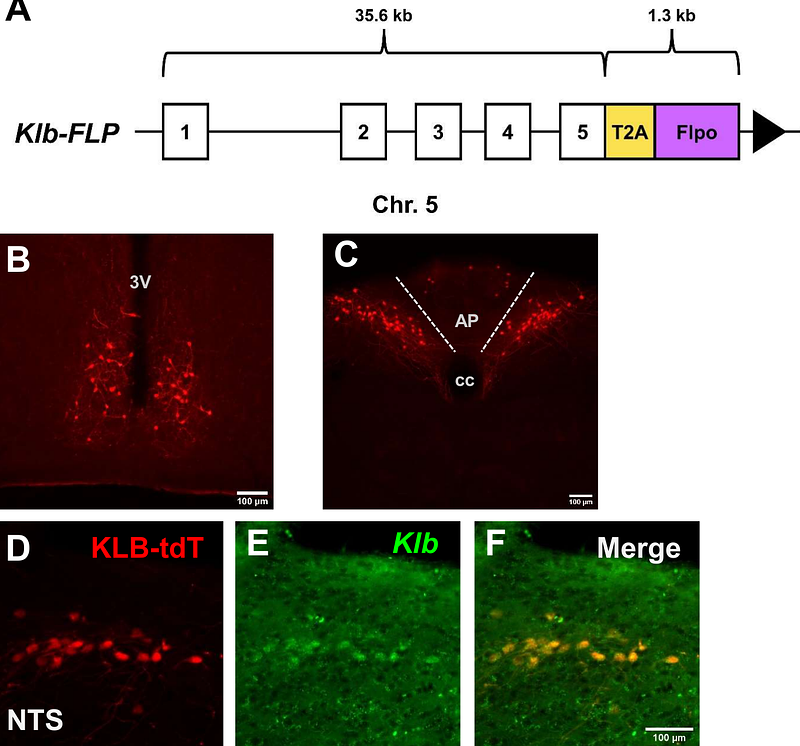FGF21 signals through KLB-expressing glutamatergic neurons in the hindbrain to mediate the effects of dietary protein restriction

FGF21 signals through KLB-expressing glutamatergic neurons in the hindbrain to mediate the effects of dietary protein restriction
Spann, R. A.; Kim, S. Q.; Khan, M. S. H.; Albarado, D. A.; Fernandez-Kim, S. O.; Berthoud, H.-R.; McDougal, D. H.; Münzberg, H.; He, Y.; Yu, S.; Morrison, C. D.
AbstractAnimals adaptively respond to protein restriction by altering both behavior and metabolism. Previous work demonstrated that the metabolic hormone FGF21 acted in the brain to coordinate these adaptive responses, but the exact site of action remains unclear. Here, we identify a discrete population of glutamatergic, Klb-expressing neurons in the nucleus of the solitary tract (NTS), demonstrating that these neurons are key to mediating FGF21 action during protein restriction. Using a novel Klb-Flp mouse line combined with intersectional genetics, we demonstrate that these neurons are directly activated by FGF21. While previous work implicated the SCN, PVN, and VMH in FGF21 action, we find that these areas do not impact the response to protein restriction. Instead, selective ablation of NTS-KLB neurons prevents metabolic adaptations to protein restriction (food intake, food choice, and energy expenditure), while their chemogenetic activation is sufficient to drive these responses. These findings establish NTS-KLB neurons as a critical node for detecting protein status and coordinating whole-body metabolic responses, providing new insight into how the brain monitors and maintains protein homeostasis.